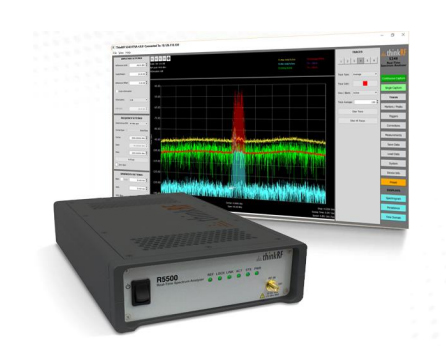Today’s spectrum environment looks far different than it did in the recent past. New innovations, standards, and technologies such as 5G are driving frequency and bandwidth requirements well above what was previously required. Also, an increase in the number of wireless devices and the resulting complexity of signals has transformed the way we record, measure, analyze and monitor the signals around us.
Importantly, these advances have led to a diverse signal environment that continues to evolve at a rapid pace. Not only has this made spectrum monitoring more complex, it has also imposed a new set of requirements on the solutions used to conduct this monitoring.
Unfortunately for users of spectrum monitoring equipment, many of these solutions have remained largely the same over the years. Consider a traditional spectrum analysis solution; it is hardware-based, large, bulky, and expensive. It lacks flexibility, versatility, and the ability to be deployed in distributed or remote locations. And it simply doesn’t give users the capabilities they need to keep up with the realities of an ever evolving spectrum.
Despite these shortcomings, these solutions were the norm for spectrum monitoring applications such as signals intelligence (SIGINT), technical surveillance countermeasures (TSCM), and regulatory monitoring applications. But it’s becoming harder for users to continue to overlook these limitations, especially when the spectrum environment presents challenges such as:
- Rapidly increasing frequency and bandwidth requirements -- well above the traditional 6 GHz range;
- Many more sources of interference, both inadvertent and malicious,
- Geographically distributed monitoring for remote and in-place applications, and,
- Increased cost pressures and decreasing costs of deployment.
Taking a Software-Defined, and Multi-Vendor, Approach to Spectrum Analysis
In response to these challenges, a new generation of Software-Defined Spectrum Analysis solutions has been developed. By being based on software-defined radio innovation, these solutions are able to provide the frequency and performance required in a compact, versatile, and cost-effective unit, and they can be quickly upgraded or adjusted for a wide variety of deployment scenarios. This gives users the flexibility and versatility needed to adapt to changing signal processing and analysis requirements without undergoing a full hardware upgrade.
The complexity of today’s spectrum environment also means spectrum monitoring users will increasingly rely on multi-vendor solutions. Recently, ThinkRF and Keysight Technologies announced a new collaboration that represents an important milestone in this multi-vendor approach – The ThinkRF R5500 Real-Time Spectrum Analyzer is the first third-party product to integrate directly with the leading Keysight 89600 VSA Vector Signal Analysis software.
By taking advantage of Keysight’s robust and powerful VSA software and the compact performance of the ThinkRF R5500 analyzer, the combined solution enables:
- Portable, remote and distributed deployment for wireless spectrum monitoring in complex and challenging signal environments,
- Deep and consistent analysis of numerous wireless signal standards and modulation types,
- Multi-measurement capabilities to configure, execute, and display multiple measurements simultaneously, and,
- Open, flexible, and cost-effective spectrum monitoring and analysis in various scenarios.
The R5500 with Keysight VSA is especially well-suited for SIGINT, Regulatory Monitoring and TSCM users, who need to detect not only traditional narrowband signals, but also intermittent, short-duration signals and emerging wideband digital communications, often in rapidly changing and challenging deployments.
As the way we use the spectrum continues to advance, the equipment used to monitor and analyze it will need to as well. Software-Defined Spectrum Analysis solutions from ThinkRF have been designed and built for these applications to provide users with the performance, versatility and additional capabilities needed for today’s signal environment.

